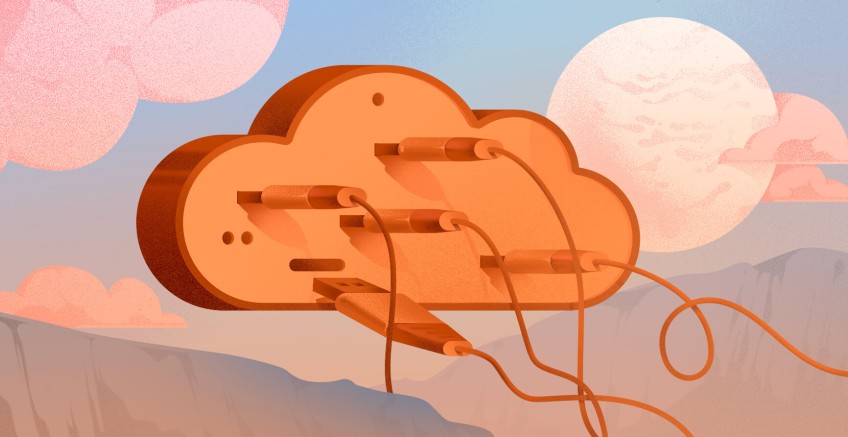How Long Do Cloud Outages Really Last?

Research carried out by Cherry Servers analyzed incident reports from the three largest cloud providers, Google Cloud, Amazon Web Services (AWS), and Microsoft Azure, between August 18, 2024 and August 17, 2025. The findings reveal how long outages really last and how differently each provider reports them.
The study found that the average incident on AWS lasted 1.5 hours, while Google Cloud disruptions averaged 5.8 hours. Azure outages were the longest on average, at 14.6 hours. An outage does not mean the entire platform goes offline. In most cases, only a single service, feature, or region experiences disruption. But depending on the workload, even a narrow disruption can have major consequences.
“These figures show that while outages often resolve faster than headlines suggest, even short disruptions can cause real damage if they hit critical services,” said a Cherry Servers spokesperson.
#Headline Numbers: Incidents Summary
| Cloud Provider | Incidents (Aug 2024–Aug 2025) | Average Duration |
|---|---|---|
| AWS | 38 | 1.5 hours |
| Google Cloud | 78 | 5.8 hours |
| Microsoft Azure | 9 | 14.6 hours |
The averages hide important details: most outages end quickly, but a small number of long ones skew the totals. And the fact that Google reported 78 incidents while Azure only reported 9 shows how much reporting practices differ.
“These headline figures help frame the problem, but they don’t give the whole picture,” the Cherry Servers spokesperson said. “Even a 20-minute outage can mean missed trades, blocked logins, or stalled transactions, depending on the workload.
#Distribution of Outages
Google Cloud reported far more incidents, 78 in a year, suggesting it tracks smaller disruptions more closely. Azure reported the fewest, just 9, but its longest case stretched over 50 hours and heavily skewed its average.
Most Azure outages were resolved in less than 24 hours, but that one multi-day disruption distorted the numbers. Excluding it, Azure’s average falls below 8 hours. Similarly, Google’s 19-hour Vertex Gemini API outage inflated its total average.
“The distribution shows why averages can mislead,” explained the Cherry Servers representative. “Most outages finish within hours, but rare extended cases, even if they affect limited services, skew the numbers and shape perception.”
#Case Studies: Long and Short Outages
- Azure, late 2024: A 50-hour disruption in China North 3 was the dataset’s longest. It affected one region but raised Azure’s annual average significantly.
- Google Cloud, November 2024: A 19-hour outage hit the Vertex Gemini API. It only affected specific functions, but for the customers relying on them, downtime lasted nearly a full day.
- AWS, August 2024: A 50-minute IAM issue caused login failures in one region, showing how even a short outage can block critical access.
- Google Cloud, August 2024: A six-minute slowdown in Chronicle Security’s UDM search queries in the Europe multi-region highlighted Google’s sensitivity in reporting even brief glitches.
“The extremes matter,” said the Cherry Servers spokesperson. “Some of the longest outages were limited in scope, while some of the shortest ones touched high-value services. Neither scenario is trivial for the businesses that rely on them.”
#Outage Scope Matters
Cloud outages rarely take entire platforms offline, but scope matters. Authentication failures, storage errors, or API slowdowns in one region can have outsized effects depending on what customers are doing.
A 14-hour or 50-hour outage might touch only a small base of users. A 30-minute authentication issue might disrupt millions.
“Duration only tells part of the story,” the Cherry Servers representative noted. “Businesses need to weigh both how long outages last and which workloads get hit.”
#Transparency and Reporting
AWS, Google, and Azure use different reporting methods:
- AWS logs granular, service-level updates.
- Google Cloud publishes highly detailed incident reports.
- Azure issues broader post-incident reviews.
These differences affect perception. Google’s numbers look higher partly because it reports small disruptions that AWS and Azure might not count. Azure’s low numbers reflect stricter thresholds for what it classifies as an incident.
“The lack of consistency makes it hard to compare providers directly,” said the Cherry Servers spokesperson. “It also means customers need to dig deeper to understand what these outages really mean for them.”
#Downtime in Context
Between August 2024 and August 2025:
- AWS incidents averaged 1.5 hours across 38 cases.
- Google Cloud averaged 5.8 hours across 78 cases.
- Azure averaged 14.6 hours across just 9 cases, skewed by one 50-hour disruption.
Most outages ended within hours, but scope varied widely, from a six-minute slowdown in Google’s Chronicle Security to a 50-hour Azure disruption.
“As reliance on the cloud grows, organizations can’t just look at averages,” the Cherry Servers spokesperson concluded. “For some workloads, like blockchain or real-time applications, even a short, narrow outage can create risks that averages won’t capture. That’s why businesses weigh alternatives like bare metal cloud when uptime and control are critical.”
#Data Sources
Data was collected from the outage reporting pages of
- AWS (https://health.aws.amazon.com/health/status),
- Google Cloud Services (https://status.cloud.google.com/summary),
- AWS (https://health.aws.amazon.com/health/status).
Methodology: We counted the number of incidents that were reported in the timeframe from August 18th 2024 to August 17th 2025. In the case of Google Cloud Services, since they include logs for all affected services, we needed to remove duplicates to ensure the same incident was not included more than once in cases where more than one service was affected.
#About Cherry Servers
Cherry Servers is a dedicated bare metal cloud provider that offers customizable server infrastructure with predictable pricing and full hardware control. Unlike hyperscale clouds, which rely on shared virtualized resources, Cherry Servers delivers raw compute power with no virtualization overhead. This is particularly valuable for blockchain workloads, real-time applications, and other performance-sensitive use cases.
With dedicated bare metal cloud, organizations gain flexibility of the cloud while gaining full control, improved security, and better cost predictability over their server infrastructure.
Get 100% dedicated resources for high-performance workloads.



